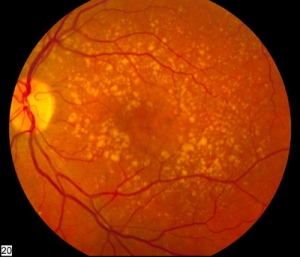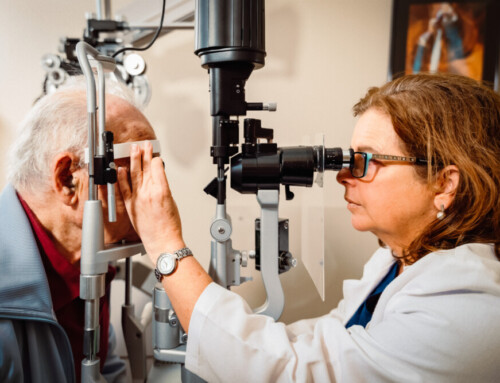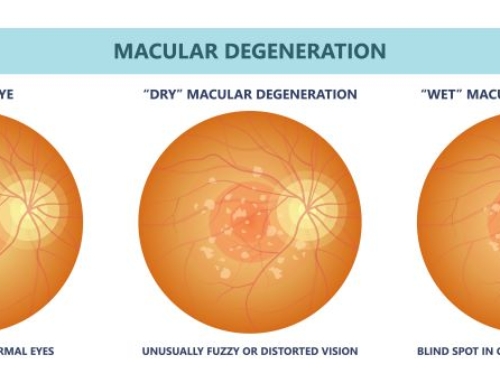On occasion a patient can come into an eye doctors office very scared that one of their eyes has suddenly become distorted or blurred. This can happen when a macular hole develops. Macular holes occur when there is a break in the layers of the macular. Our macular is the area in the back of our eyes that is responsible for our central detailed vision.
When our eyes age, the gel in our eyes, called the vitreous, pulls away from the macular and sometimes causes a hole to form. Holes tend to form over the age of 60 and occur more in women. The hole may be a partial hole, not very deep, or a full thickness hole which is much deeper. The worst case scenario is a full thickness hole.
When you come in for an eye exam with these symptoms, the doctor will perform a dilated exam and examine the whole retina. An OCT, optical coherence tomography, may be performed which shows the thickness of the macula and is a good tool to use in the diagnosis of the macular hole.
Macular holes are typically treated by performing a vitrectomy. The gel is removed from the eye and the eye is filled with a gas or oil bubble that flatten the macular hole and aid in its closing. There is a newer treatment by a drug called Jetrea, which treats some macular holes without requiring surgery.
It is important to note that if one eye gets a macular hole then there is a chance of getting one in the other eye. If there are any early changes in vision, it is important to come see the doctors at the Fort Lauderdale Eye Institute or Fort Lauderdale Retina Institute so that a thorough exam can be performed.











